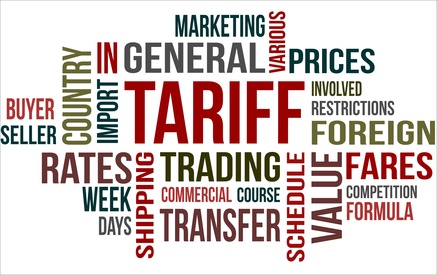Gillespie: America’s last trade war exacerbated the Great Depression in the 1930s, when unemployment rose to 25%. Claiming it was protecting American jobs, Congress passed the
Smoot-Hawley Act in 1930. The original bill was meant to protect farmers. But to build political support, many lawmakers asked for tariffs — or taxes — on all sorts of goods in exchange for their vote.
Several nations, such as Canada, slapped steep tariffs — or taxes — on US goods shipped and sold abroad. For example, US exports of eggs to Canada fell to 7,900 in 1932 from 919,000 in 1929, according to Doug Irwin, a Dartmouth professor and former trade adviser to President Reagan.
The result: US imports fell 40% in the two years after Smoot-Hawley. Banks shuttered. Unemployment shot up. Surely, there were a litany of factors at play. But economists widely agree Smoot-Hawley made the Great Depression much worse than otherwise.
In 2016,
I asked Trump’s trade adviser Peter Navarro whether Trump’s trade policies would start a trade war akin to Smoot-Hawley. He told me «there are no similarities at all.» He added that Smoot-Hawley was a «protectionist» tariff — that is, it fired the first shot in the war. Navarro argued that trade has been unfair for decades. Trump’s tariffs would be «defensive.»
A good gut check came from New York Federal Reserve President William Dudley — currently the No. 2 in rank at America’s central bank. In a
Thursday speech (before Trump’s tariffs), Dudley said tariffs and other trade barriers are a «dead end» and «destructive.»
Cillizza: Trump’s decision on steel and aluminum tariffs seem to catch his administration by surprise. Why?
Gillespie: Trump’s rhetoric on trade has been mainly pointed toward China. But these tariffs would hit our top allies harder than China. A key part of the surprise is that Trump made no reference to something called exemptions. Usually in a trade measure like this, the US president would announce the tariffs, but say they don’t apply to Canada, Mexico and other allies. But as of now, no countries have been exempted from the tariffs. President George W. Bush last applied sweeping steel tariffs in 2002, but he exempted Canada and Mexico because the US has a critical trade agreement with them, NAFTA. (Those tariffs were dropped a year later when the World Trade Organization ruled them illegal.)
Trump’s rationale last year for these tariffs is that countries that import steel and aluminum into the US pose a risk to American national security.
The top steel exporters to the United States: Canada, Brazil, South Korea and Mexico (by volume). China isn’t even in the top 10. So from our allies’ perspective, the national security reason is a head-scratcher.
Cillizza: Walk me through theory of why these tariffs can work in a way Trump wants them to.
Gillespie: Trump’s aim is to protect steel and aluminum manufacturing jobs. These tariffs could certainly achieve that goal. Tariffs reduce foreign competition, making it more sensible for US companies to buy American-made steel and aluminum. So from car companies to craft breweries (aluminum beer cans), firms would have to switch from buying foreign metal to buying American made.
However, American steel and aluminum is generally more expensive to buy because US workers earn higher wages. Companies pass down higher labor costs to customers. When they buy steel for engines or aluminum for beer cans, they in turn have to raise prices on their customers. Usually higher prices lead to lower sales, and ultimately, fewer jobs at those companies.
A quick anecdote. President Barack Obama slapped tariffs on Chinese tires in 2009 to protect US tire companies. While the tariffs did protect 1,200 tire jobs,
about 3,700 retail jobs were lost as a result, according to an analysis by the Peterson Institute for International Economics, a Washington research group.
So while tariffs protect jobs in some industries, they tend to lead to higher job losses in other sectors.
Cillizza: Nebraska GOP Sen. Ben Sasse said of the tariffs that «the President is proposing a massive tax increase on American families.» Explain.
Gillespie: Sasse is right. Companies don’t bite the bullet on tariffs. They raise prices on consumers. In January, Trump slapped tariffs on foreign-made washing machines. Several days later,
LG said it was raising prices as a result of the tariffs. LG and the stores that it sells in can weather higher prices. The question is how much American consumers are willing to pay.
Cillizza: Finish this sentence: «The most likely economic outcome of Trump’s move on steel is _____________.» Now, explain.
Gillespie: «Retaliation.»
If Trump goes forward with across-the-board tariffs, Canada, the European Union and China will quickly respond. Trump often says that he seeks an «America First» policy, and that other nations should seek policies that put their nations first. Well, that’s exactly what will happen. Other governments want to protect their workers just as much as Trump wants to protect steel and aluminum jobs.
When countries retaliate with tariffs against US goods, that’s a trade war.
The last American ‘trade war’ didn’t work out so great
CNN March 2, 2018





